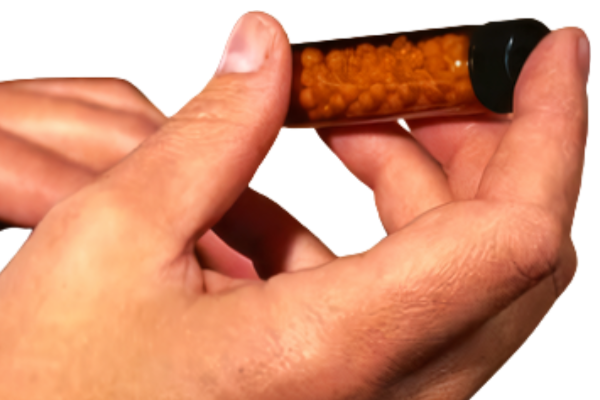Words: Team THINKWELLNESS360
Q: I’ve been taking homeopathic medicines for a long time; it’s our family medicine. Everyone has their way of taking them — what would be the ‘best’ mode of taking them, along with the right dosage?
— GK, Kollam
A: Homeopathic remedies, or medicines, are, most often, given in pills form, to be kept and allowed to dissolve under the tongue. They are small, round pills. They are ergonomically friendly. They can be packed in small bottles and they can last for long periods.
The usual dose is 5-6 pills for an adult and a child alike.
Likewise, a normal dose of any liquid is about 8-10 drops, in half cupful of water.
The medicinal liquid can be rubbed into the chest when the individual, or patient, cannot open the mouth too.
In extremely acute cases, it is best to use half a capful, or about 20 drops, in some water in a glass, stir well and take a fill — a few tablespoonful at a time, at half-hour intervals.
In most acute illnesses, a dose may be taken every 2-3 hours during the day. This may be continued at night, if one is awake.
Tablets are also available. They may be placed under the tongue and allowed to dissolve, or they can be chewed, if preferred. The usual dose is 4-6 tablets for adults, 3-4 tablets for children.
Dosages and repetitions depend on the potency used, the type of illness, and the age of the patient.
As a general rule of the thumb, low potencies — 6C, to 12C, or 6X — are used in acute conditions, such as colds, headaches, vomiting, injuries, wounds, and so on.
Medium potencies such as 30C, or 200C, are used in more established conditions — these may be recurring migraines, or menstrual periods.
Higher potencies — 1M and above — are best used in deeper constitutional illnesses and treatment, under the guidance of a professional homeopathic physician.
It may be borne in mind that 6X and 6C are basically good, fast-acting potencies. They are also best suited in a majority of common health disorders. They are available in a variety of dose forms, including liquids, pills, pellets, tablets, and so on, as explained before. They are best placed under the tongue and allowed to dissolve. They may also be chewed.
Repetition
One dose of 3X-6C may be given until the patient improves, or till a change occurs. If there is no change after one, or two days, in acute illnesses, it may be deduced that the remedy has probably failed. It’s time to move on to a new remedy.
Most homeopaths repeat medium potencies — 30C and 200C — once, or twice a day, for adults and in children for several days. They are used in long-term disorders, such as arthritis, once a day, or for several weeks.
For chronic conditions, the 200C potency may be given once a week. Higher potencies, such as IM, are given every fortnight/month for constitutional illnesses.
It is evidenced that infants and children respond more quickly to homeopathic remedies than adults. This, despite the fact that their symptom-picture is often subject to change much more quickly. It is also recommended that they should be monitored closely.
This holds good particularly in infants, where results from a single dose can appear within a few minutes to an hour. This also suggests that remedies may be given less often — probably once in the morning and once at bed-time.
Oral Spray
Oral spray is a new introduction in homeopathic practice. They have proved to be convenient in children and older adults. The usual dose is 4-5 sprays for an adult, 2-3 sprays for a child. There are some homeopathic injections available — their use is restricted to a select few practicing homeopaths.
Wait. Watch. Act
It is always good to wait for some time after giving a well-chosen remedy and eliciting a response.
You may encounter the following triad of situations after giving the medicine and after waiting for results to emerge.
When symptoms improve [ameliorate]. When symptoms disappear and the individual feels better, there is no need to repeat the medicine. You may give a repeat dose only when the improvement stops, or there is no further progress.
When symptoms persist. You may be, rest assured, your prescription of a well-chosen remedy has failed when there is no improvement, after 6-8 hours, or 1-2 days’ time, in acute conditions. You will have to now select a new remedy.
When symptoms worsen [aggravate]. Probably the remedy you’ve given is well-chosen, but it may have overstimulated a response. Just stop the medicine.
Most often, a marked improvement is seen once the so-called homeopathic aggravation subsides. You may have to repeat a dose, or two, provided there is no progress. Not otherwise. If the earlier improvement stops, and there is a lull, you may switch over to a higher potency than what you’d prescribed to begin with.
When the aggravation state does not ebb, it is best to seek professional homeopathic help. It may also be borne in mind that any illness that fails to improve after the administration of well-chosen remedies should be reviewed by a professional homeopathic physician in an office consultation.

